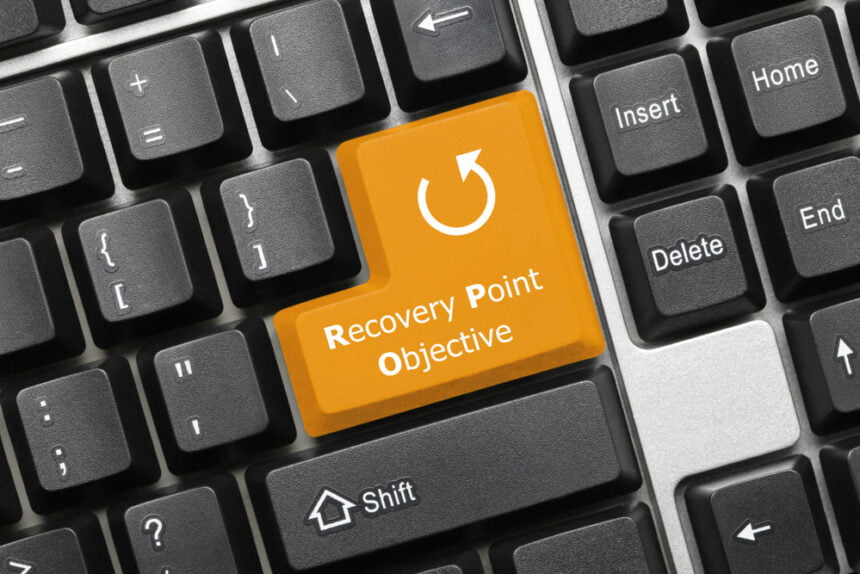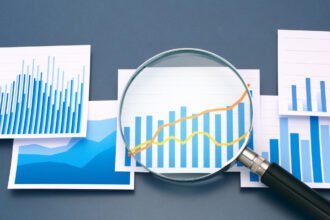Predictive analytics is revolutionizing the future of cybersecurity. A growing number of digital security experts are using predictive analytics algorithms to improve their risk scoring models.
The features of predictive analytics are becoming more important as online security risks worsen. As TechCrunch pointed out in one article, the classification of cybercriminals is no longer limited to individuals using old school scripts. They also include hostile state actors and corporate espionage threats.
This means that predictive analytics is becoming more important. One of the uses of predictive analytics algorithms is with setting recovery point objectives.
You can’t know if your business will suffer a cyberattack, be the victim of a natural disaster, world pandemic, or anything in between that could eventually cause your business to go bankrupt.
Even if you aren’t IT savvy, you can learn how to manage potentially damaging events for your business.
The key is in preparing yourself for the worst by determining the Recovery Point Objective and using the data to your advantage.
What Is Recovery Point Objective Exactly?
Recovery Point Objective (RPO) is, by definition, the minimum time it should take for your systems to get back up after the disaster hits. It might take a few seconds, minutes, or even days for your business to get back on its feet.
It refers to the minimum estimated time your business needs to recover after a major disaster before the damage is too great.
That could mean you suffered some type of cyberattack such as a hacked website or major damage to your infrastructure because of a natural disaster.
Why Should You Use Predictive Analytics to Set an RPO?
No matter if your infrastructure or online presence unexpectedly suffered, detrimental events could be a significant setback for your business. In some cases, it is likely that your business may not recover. This is why you need to use predictive analytics technology to set your RPO as quickly as possible.
Online attacks might cause major financial losses for your business, one of the primary reasons your company could become bankrupt in the future – especially if the business is already on shaky ground.
If you prepare yourself for a disastrous event, you can avoid the possible outcome of closing down your business for good.
That is why you should anticipate your Recovery Point Objective when creating a disaster recovery plan.
As well as anticipating the Recovery Time Objective, i.e., the maximum time it takes to restore your functions, calculating the possible Recovery Point Objective might save your company.
Steps to Use Predictive Analytics to Create Your Recovery Point Objective
1. Pinpointing the Most Important Assets and Functions
Determine which functions of your system are the most valuable. You know the essential needs of your company that keep it going. Predictive analytics algorithms make this process much easier.
For example, your company could be reliant on its online presence or physical infrastructures.
If you have an e-commerce website and get malicious code on your site, you will want to secure your customer’s data and get the system up and running before your customers leave your shopping carts, and you lose their trust.
2. The Worst-Case Scenario
What is the worst that could happen to your company?
For instance, if your business is online-based, it might endure a cyberattack that could harm not only your potential sales and customer experience of the site but also your reputation.
If you have physical stores or factories, your worst-case scenario could be significant damage to your facilities. Possible reasons might be natural disasters such as an earthquake, hurricane, the flood, etc. They will also depend on where you live.
Take various events into consideration when calculating your RPO and predict more than one scenario to be sure.
3. Learn From Others
Think about companies similar to your own that have suffered cyberattacks in the past. The best predictive analytics algorithms should be trained based on data from other case studies.
Ask yourself these questions: What happened to them? What did they do during and after the attack? Did they plan that something similar could happen? What were the consequences? How long it took them to get back to their operational state?
Use the data of companies that are similar in size and field of work to estimate your possible Recovery Point Objective.
It’s important to remember that not everything will always go smoothly, and as a successful businessman, Elon Musk suggests, failure could be a crucial experience for growing your business. So be ready and establish good foundations before it is too late.
4. Learn From Your Past Mistakes
Your company may have experienced something similar before. If that is the case, you have valuable data on your hands.
Use Recovery Point Objective information to your advantage if your company suffered damage in the past and use it to strategize for the next possible disaster.
Predictive Analytics is Crucial for Setting RPOs
Recovery Point Objective is not a painstakingly long task, but it is an important one. It could potentially save your business from failure and devastating expenses. Moreover, your employees will be grateful to know that you have everything under control, even if the worst scenario hits your business.
The good news is that predictive analytics technology can simplify this process. You might not be able to predict all possible disasters that could affect your business, but you can rest assured knowing that if the time comes, you will have a plan of action to get back on your feet as soon as possible.










